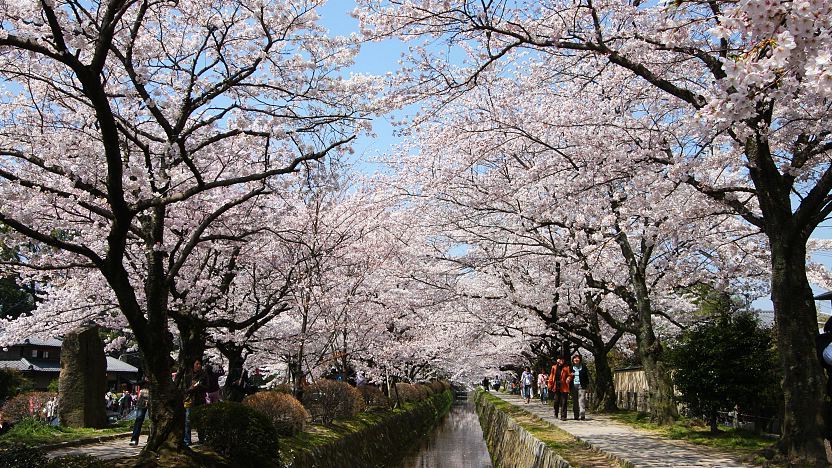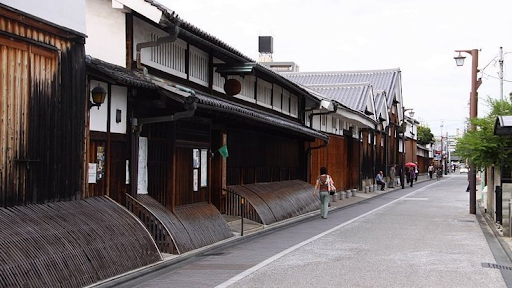Discovering the Hidden Gems of Kyoto, Japan
Kyoto, the ancient capital of Japan, is renowned for its classical Buddhist temples, stunning gardens, imperial palaces, Shinto shrines, and traditional wooden houses. While famous landmarks like the Fushimi Inari Shrine, Kinkaku-ji (Golden Pavilion), and Arashiyama Bamboo Grove attract throngs of tourists, Kyoto holds numerous lesser-known treasures waiting to be explored. This guide will take you off the beaten path to uncover Kyoto’s hidden gems.
1. Philosopher’s Path (Tetsugaku no Michi)
Nestled in the Higashiyama district, the Philosopher’s Path is a scenic walkway that runs alongside a canal lined with hundreds of cherry trees. Named after the influential 20th-century philosopher Nishida Kitaro, who is said to have used this path for daily meditation, it offers a serene environment perfect for a leisurely stroll. Visit during spring to witness the breathtaking cherry blossom display or in autumn when the leaves turn vibrant hues of red and gold.
2. Okochi Sanso Villa
Located in Arashiyama, Okochi Sanso Villa is the former residence of the famous Japanese actor Denjiro Okochi. Unlike the often-crowded Arashiyama Bamboo Grove, this villa provides a tranquil escape with its meticulously maintained gardens, tea house, and stunning views over Kyoto. For a modest entry fee, visitors can enjoy traditional matcha tea and Japanese sweets while soaking in the peaceful ambiance.
3. Kurama and Kibune
Just a short train ride from central Kyoto, the villages of Kurama and Kibune offer a refreshing retreat into nature. Start with a hike from Kurama, famous for its Kurama-dera Temple, through the mystical forest trail to Kibune, where you can visit the Kibune Shrine. After your hike, relax in the hot springs of Kurama Onsen or enjoy a riverside meal at one of Kibune’s traditional restaurants, which offer dining platforms over the river during the summer months.
4. Nishiki Market
Often referred to as “Kyoto’s Kitchen,” Nishiki Market is a narrow, five-block-long shopping street lined with more than one hundred shops and restaurants. Unlike the larger markets in Tokyo, Nishiki offers a more intimate experience where you can sample local delicacies, such as fresh seafood, pickles, and traditional sweets. The market is a great place to buy unique souvenirs and experience the local food culture firsthand.
5. Tofuku-ji Temple
While many visitors flock to Kyoto’s more famous temples, Tofuku-ji remains relatively undiscovered by the masses. Known for its magnificent autumn foliage, Tofuku-ji boasts one of the largest and most beautiful temple gardens in Kyoto. The Tsutenkyo Bridge, which spans a valley of lush maple trees, provides a stunning vantage point during the autumn season. The temple’s serene atmosphere and exquisite gardens make it a must-visit for those seeking a quieter experience.
6. Kyoto International Manga Museum
For manga enthusiasts, the Kyoto International Manga Museum offers an immersive dive into Japan’s rich manga culture. Housed in a former elementary school, the museum’s extensive collection includes over 300,000 manga volumes, some dating back to the Meiji period. Visitors can relax in the museum’s reading room, attend manga drawing workshops, and explore exhibits that showcase the history and influence of manga in Japanese society.
7. Fushimi Sake District
Venture to the southern part of Kyoto to discover the Fushimi Sake District, renowned for its high-quality sake production. The district is home to over 40 breweries, many of which offer tours and tastings. Visit the Gekkeikan Okura Sake Museum to learn about the sake brewing process and history. Strolling through the picturesque streets lined with traditional buildings and willow trees, you’ll find an array of charming shops and restaurants where you can sample various sake varieties and local cuisine.
8. Pontocho Alley
Pontocho Alley, running parallel to the Kamogawa River, is one of Kyoto’s most atmospheric dining areas. This narrow, historic alleyway is lined with traditional wooden machiya houses, many of which have been converted into restaurants and teahouses. In the evenings, the alley comes alive with the warm glow of lanterns, creating an enchanting ambiance. Enjoy a meal at one of the riverside restaurants with outdoor seating, offering beautiful views of the Kamogawa River, especially during the warmer months.
9. Gion District
While Gion is well-known for its geisha culture, exploring beyond the main Hanamikoji Street reveals hidden corners filled with historical charm. Wander through the narrow alleyways to discover traditional tea houses, antique shops, and small shrines. Visit the Yasaka Shrine, especially during one of its many festivals, to experience local traditions. If you’re lucky, you might even catch a glimpse of a geiko (Kyoto dialect for geisha) or maiko (apprentice geisha) on their way to an engagement.
10. Kamigamo Shrine
As one of Kyoto’s oldest Shinto shrines, Kamigamo Shrine offers a peaceful respite from the city’s more tourist-heavy attractions. Located in northern Kyoto, this UNESCO World Heritage Site is surrounded by beautiful natural scenery, including the Kamo River and lush forests. The shrine’s tranquil grounds and impressive architecture provide a serene atmosphere for reflection and exploration. Visit during one of its traditional festivals, such as the Aoi Matsuri in May, to witness vibrant cultural celebrations.
Conclusion
Kyoto’s hidden gems offer a diverse range of experiences that go beyond the typical tourist itinerary. From serene temples and scenic pathways to cultural museums and historic districts, there’s always something new to discover. So next time you find yourself in Kyoto, take a moment to explore these lesser-known treasures and immerse yourself in the rich tapestry of Japan’s ancient capital.











